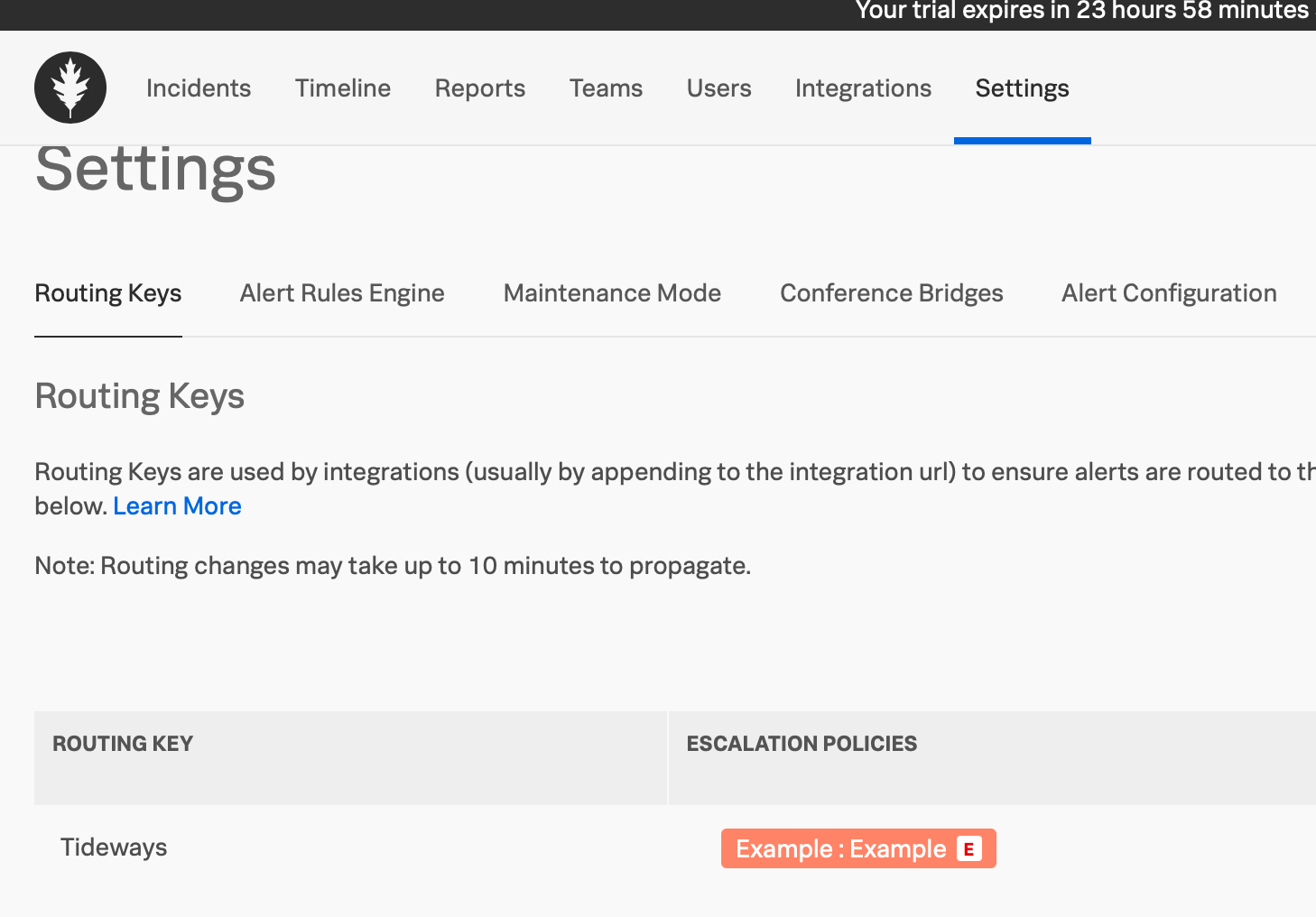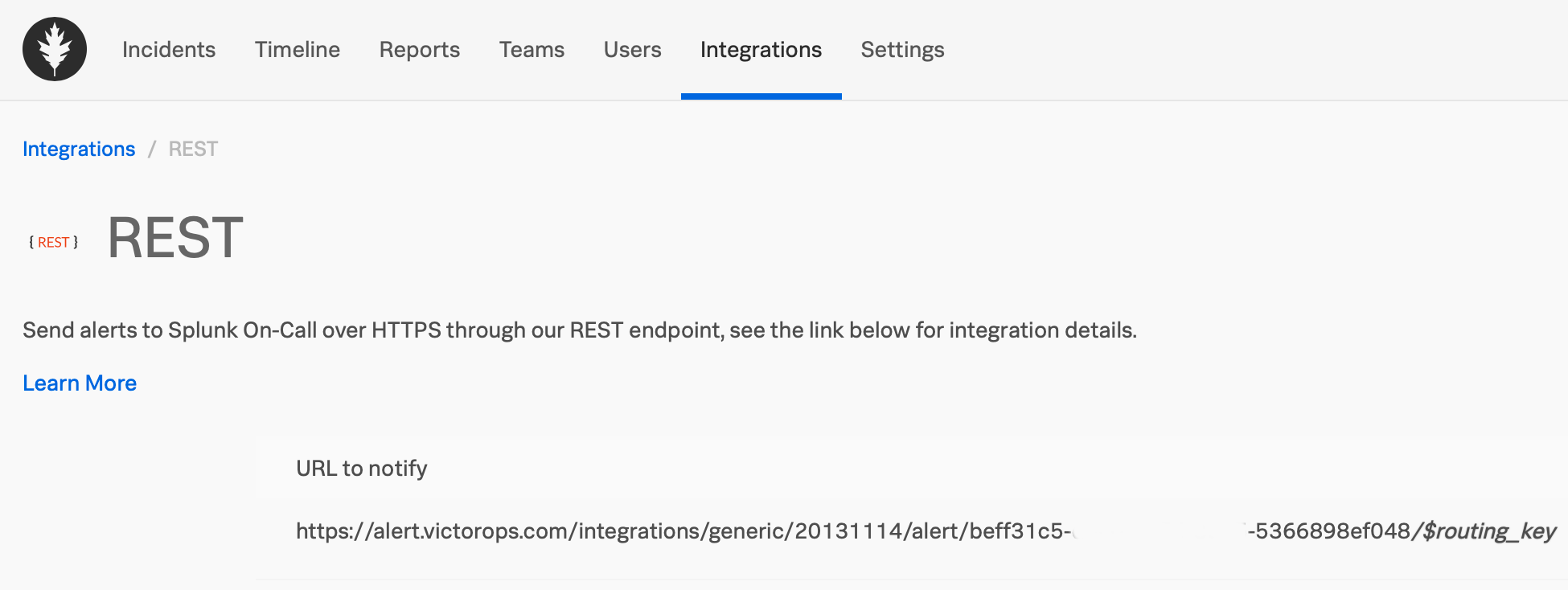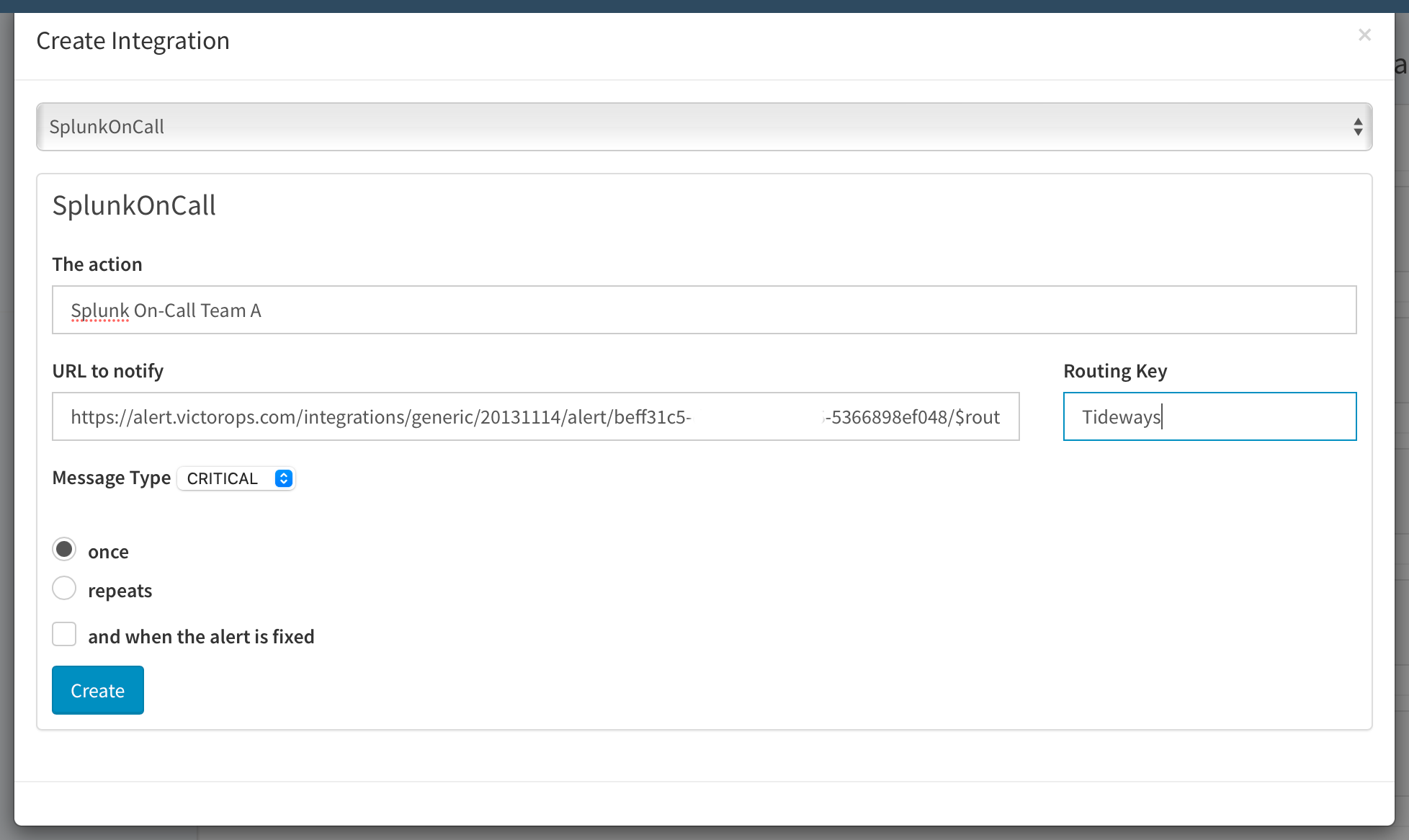Splunk On-Call (VictorOps)
Splunk On-Call (formerly VictorOps) makes expensive service outages a thing of the past.
It is as a central hub for alerts from multiple different sources, including Tideways.
Configuration
-
In your Splunk On-Call account, go into the Settings > Routing Keys section.
Either create a new routing key or write down an existing one to use with the Tideways integration.

-
In the Splunk On-Call "Integrations" > "REST" section, copy the integration URL, including the
$routing_keyvariable:
-
In Tideways, open up the organization’s "Integration Settings" and select "Add New Integration". Select "Splunk OnCall" from the dropdown and fill the URL to notify and Routing Key fields with the information gathered in steps 1 and 2.

Select the Message Type to use in Splunk as either "CRITICAL" or "WARNING". Create two integrations for Splunk if both message types should be used for different alert notifications.
After saving, the "Preview" button allows testing the integration.
The Splunk integration can now be used in alert notifications for the organization.
Payload Details
Tideways attaches the following custom details to a Splunk On-Call alert:
Key |
Message |
Description |
application |
All |
Name of the Tideways project in "org/project" format |
type |
All |
Type of the alert (one of error_rate, response_time, …) |
service |
All |
Service where the alert was triggered |
environment |
All |
Environment where the alert was triggered |
resposnse_time |
response_time |
Current response time |
error_rate |
error_rate |
Current failure rate |
threshold |
response_time, error_rate |
Threshold the alert went over to get triggered |
state_message |
response_time, error_rate |
Threshold the alert went over to get triggered |
exception |
new_exception |
Class name of the exception being thrown |
source |
new_exception |
File and line where the exception occurred |
occurrences |
new_exception |
Number of times the exception occurred |